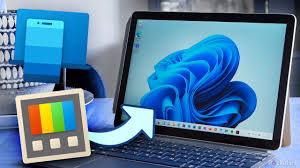Essential Windows Tweaks for Performance, Productivity, and Privacy
Windows is a powerful and versatile operating system, but it often Windows privacy optimization comes with unnecessary features, bloatware, and default settings that can slow down performance or compromise privacy. By making a few key tweaks, you can significantly improve your PC’s speed, responsiveness, and security. This guide will cover essential Windows tweaks for better performance, productivity, and privacy.
1. Speed Up Boot Time with Fast Startup
Windows includes a feature called Fast Startup that combines hibernation and shutdown to reduce boot times. However, it’s not always enabled by default.
How to Enable Fast Startup
- Open the Control Panel and go to Power Options.
- Click Choose what the power buttons do on the left sidebar.
- Click Change settings that are currently unavailable at the top.
- Scroll down and check Turn on fast startup (recommended).
- Click Save changes.
Note: If you use dual-booting or experience compatibility issues, you may want to disable Fast Startup instead.
2. Disable Unnecessary Startup Programs
Many programs automatically start when Windows boots, consuming memory and CPU power.
How to Manage Startup Programs
- Press Ctrl + Shift + Esc to open the Task Manager.
- Click on the Startup tab.
- Disable unnecessary programs by right-clicking and selecting Disable.
This tweak can dramatically improve boot time and overall system responsiveness.
3. Optimize Windows for Best Performance
Windows includes visual effects that enhance appearance but may slow down your system.
How to Adjust for Best Performance
- Right-click on This PC and select Properties.
- Click Advanced system settings on the left.
- Under the Performance section, click Settings.
- Select Adjust for best performance, or manually disable unnecessary animations while keeping smooth fonts.
- Click Apply and OK.
This will make Windows feel snappier, especially on older systems.
4. Remove Bloatware and Unwanted Apps
Windows comes pre-installed with apps you may never use, consuming storage and system resources.
How to Uninstall Unwanted Apps
- Open Settings > Apps > Installed Apps.
- Click on unnecessary apps and select Uninstall.
Alternatively, use a tool like BCUninstaller or Revo Uninstaller for a more thorough removal.
5. Improve Privacy by Disabling Telemetry
Windows collects data to improve user experience, but you can reduce data collection for privacy.
How to Disable Telemetry and Data Collection
- Open Settings > Privacy & security > Diagnostics & feedback.
- Set Diagnostic data to Required only.
- Turn off Improve inking & typing and Tailored experiences.
- Under Activity history, uncheck Send my activity history to Microsoft.
For deeper privacy control, use O&O ShutUp10++, a free tool to disable hidden telemetry settings.
6. Increase Internet Speed by Tweaking Network Settings
Windows reserves bandwidth for system updates and background services, but you can reclaim it.
How to Disable Reserved Bandwidth
- Press Win + R, type gpedit.msc, and press Enter.
- Navigate to Computer Configuration > Administrative Templates > Network > QoS Packet Scheduler.
- Find Limit reservable bandwidth, double-click it, and set it to Enabled.
- Set the bandwidth limit to 0%, then click Apply and OK.
This tweak can improve internet speed, especially for streaming and gaming.
7. Enable Dark Mode and Customization for Better Productivity
Dark mode reduces eye strain and improves battery life on laptops.
How to Enable Dark Mode
- Open Settings > Personalization > Colors.
- Under Choose your mode, select Dark.
For more customization, use third-party tools like Rainmeter to create a personalized desktop experience.
8. Disable Cortana to Save Resources
Cortana consumes CPU and RAM in the background, even if unused.
How to Disable Cortana
- Press Win + R, type gpedit.msc, and press Enter.
- Navigate to Computer Configuration > Administrative Templates > Windows Components > Search.
- Double-click Allow Cortana, set it to Disabled, and click Apply.
If using Windows Home, you may need to edit the Registry instead.
9. Enable God Mode for Easy Access to Advanced Settings
Windows has a hidden God Mode that provides quick access to advanced settings.
How to Enable God Mode
- Right-click on the desktop and select New > Folder.
- Rename the folder to:
GodMode.{ED7BA470-8E54-465E-825C-99712043E01C} - Open the folder to access advanced system settings.
This tweak is useful for power users and administrators.
10. Extend Battery Life on Laptops
Windows power settings can optimize battery life.
How to Enable Battery Saver Mode
- Open Settings > System > Power & battery.
- Under Battery saver, enable it when below 40-50%.
- Set Power mode to Best power efficiency when on battery.
For even better battery life, lower screen brightness and disable unnecessary background apps.
Conclusion
By applying these Windows tweaks, you can significantly boost performance, improve privacy, and enhance productivity. Whether you’re a casual user or a power user, these optimizations help you get the most out of your PC. Try them out and enjoy a faster, smoother Windows experience! 🚀💻
Would you like more advanced tweaks or specific optimizations for gaming or workstations?

